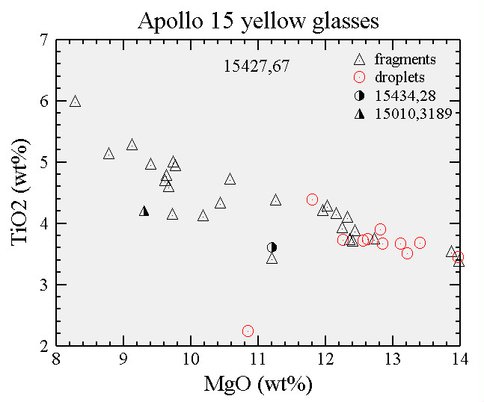2012 Annual Science Report
 Rensselaer Polytechnic Institute
Reporting | SEP 2011 – AUG 2012
Rensselaer Polytechnic Institute
Reporting | SEP 2011 – AUG 2012
Project 3: Impact History of the Earth-Moon System
Project Summary
The influx of interplanetary debris onto the early Earth represents a major hazard to the emergence of life. Large crater-forming bodies must have been common in the early solar system, as craters are seen on all ancient solid surfaces from Mercury to the moons of the outer planets. Impact craters are few in number on the Earth today only because geologic activity and erosion gradually erase them. The Earth’s nearest neighbor, the Moon, lacks an atmosphere and significant tectonic activity, and therefore retains a record of past impacts. The goal of our research is to reconstruct the bombardment history of the Moon, and by proxy the Earth, to establish when the flux of sterilizing impacts declined sufficiently for the Earth to became habitable.
Project Progress
40Ar/39Ar ages of lunar impact glasses (Zellner, Delano, Swindle)
Forty-five (45) lunar glasses from Apollo 15 have been selected and chemically analyzed for subsequent 40Ar/39Ar age determinations by collaborators, Nicolle Zellner and Timothy Swindle. Figure 1 shows that these glasses define a compositional trend for MgO (wt%) versus TiO2 (wt%) within which droplets of glass dominate the high-MgO end and broken glass fragments dominate the low-MgO end of the trend. All of these glasses are >300-microns in size and have K-abundances (>2000 ppm) that will make them suitable for 40Ar/39Ar dating to improve the constraints on the bombardment history of the Moon (and Earth).
Compositional trend for MgO versus TiO2 in Apollo 15 impact glasses.
Argon diffusion in lunar impact glasses (Baldwin, Watson, Roberge, Swindle, Delano)
The interpretation of 40Ar/39Ar ages on lunar impact glasses assumes that argon was not lost from the glasses since the impact event that formed them. Argon diffusion experiments were performed on eight large (>1 mm diameter) lunar impact spherules to test this assumption and to determine kinetic parameters (log(D0/a2)=-6.20 ± 0.17 s-1 and Ea=19.03 ± 0.55 kcal mol-1). The fractional loss of radiogenic Ar from lunar impact spherules was modeled using experimentally derived values and assuming thermal histories relevant to residence on the lunar surface, burial in the lunar regolith, and transient thermal events such as those caused by impacts. Models predict that large impact spherules (>0.6 mm) will remain nearly closed to Ar loss, while smaller glasses (<~150 μm) exhibit open system behavior due to temperature variations associated with lunar diurnal cycles. Such loss of radiogenic Ar, predicted from these models, results in 40Ar/39Ar ages that are younger than the age of the impact event that formed them, requiring reassessment of published 40Ar/39Ar ages.
Lunar plagioclase crystals (Baldwin, Delano, Watson)
Eighteen (18) lunar plagioclase crystals selected from an Apollo 17 regolith have been chemically analyzed (An90-98) for Ar diffusion experiments and 40Ar/39Ar age determinations. Data will be used to explore the potential for individual plagioclase crystals in a regolith to constrain the ages of specific events (impacts and volcanism) in a region. This study is a strategy for evaluating whether individual K-bearing crystals from a sieved sample of soil from other planets (especially Mars) could be used to constrain a region’s history of impact and volcanism. The value of the Apollo 17 sample is that this region of the Moon can provide a test of ground-truth since its history has been well-constrained from 40-years of rock analyses.
Publications
- Zellner, N.E.B., Swindle, T. & Delano, J.W. (2012). Understanding the Significance of Lunar Sample Data for Interpreting Lunar Impact History. LPI Contributions, 1649(85).
-
PROJECT INVESTIGATORS:
-
PROJECT MEMBERS:
Suzanne Baldwin
Co-Investigator
Wayne Roberge
Co-Investigator
Timothy Swindle
Co-Investigator
Bruce Watson
Co-Investigator
Nicolle Zellner
Co-Investigator
David Gombosi
Graduate Student
-
RELATED OBJECTIVES:
Objective 4.3
Effects of extraterrestrial events upon the biosphere
